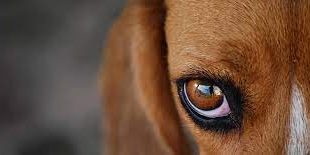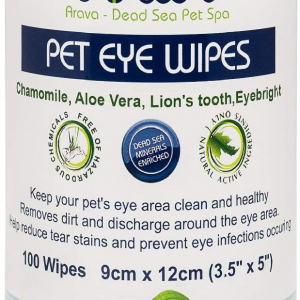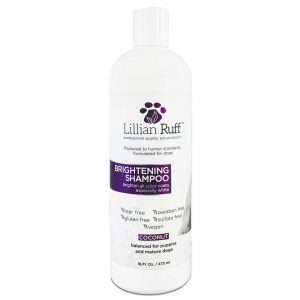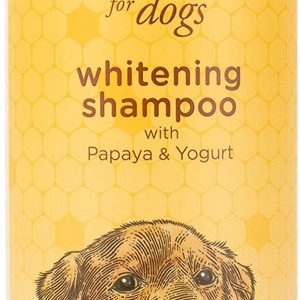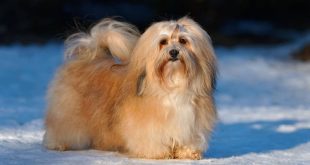Any beautiful pup with white or light-colored fur is susceptible to tears stains. That means your favorite little poodle might suffer from reddish-brown tear stains at some point or another. But don’t worry, tear stains aren’t really a health issue. It’s more about appearance. If you want your pup to be clean and shiny, you’ll need to find a way to get rid of these tear stains. Here are a few great tips and tricks on how to remove tear stains from your poodle.
Causes of Tear Stains

There are tons of reasons your poodle might be suffering from tear stains. The first and most obvious reason is excessive tearing. Whenever your poodle produces a large number of tears, streaks of dark, reddish–brown begin to form. That’s because poodle tears contain certain iron-based compounds that leave behind pigments after drying up. These pigments are basically tear stains.
There are tons of other reasons besides tear staining including allergies, eye infections, and eye abnormalities. However, regardless of what the cause is, most of these will eventually lead to excessive tearing which leads to tear stains. This is why treating the cause of tear stains is often more important than treating the stains.
Your Poodle’s Diet
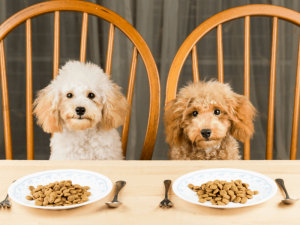
One of the factors that can contribute to tear stain formation is your poodle’s diet. If your dog is constantly eating foods that are full of grains, chemicals, or additives, you might want to reconsider its diet. Not only do these components cause several health-related issues, but they also contribute to the tear stain problem.
The best kind of foods you should choose for your poodle are high-quality, chemical-free products. It’s always better to opt for grain, soy, and corn-free nutrients. By-products and artificial additives are also things you want to avoid. All of these healthy diet changes will not only keep your pup in top shape, but they’ll also help eliminate your tear stain problem.
Is your Poodle Teething?

If your pup is teething, then don’t be surprised if tear stains start to appear. It’s actually quite common for teething to cause excessive tearing and in turn, tear stains. Just keep in mind that your pup’s teeth problems are temporary. Tear stains, however, are not, so try to deal with them as they appear. It’s always better to be on top of the matter because things get ugly.
Tap Water

Is your poodle drinking tap water? Well, you may not believe it, but it’s a big deal. Health issues aside, tap water contains tons of harmful components that can lead to tear stains. The most significant contributor to tear stain formation is high mineral content. These minerals accumulate in your poodle’s body and are secreted in body fluids. One of these fluids is tears. When your pup tears excessively, all of these built-up minerals are excreted and collect around the eye area, leading to tear stains.
Does this mean we should switch out tap water for sparkling water? Of course, not. You just need to make sure the water your pup’s consuming is filtered or purified. A small filter attached to your sink or inside the water pitcher can go a long way in avoiding tear stains.
Boric Acid
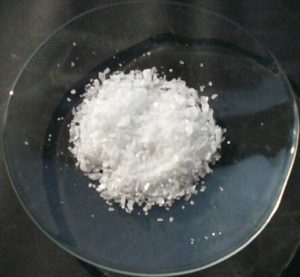
Boric acid is an excellent home remedy for getting rid of poodle tear stains. The idea is that boric acid is, well, an acid. How does that help? Well, like most acids, it has the ability to modify the pH of your pup’s fur when applied to the area around the eyes. Boric acid creates a medium that is unsuitable for many organisms to grow, including bacteria. If they can’t grow, then you won’t have to worry about infections and therefore, you’re safe from tear stains. You can use boric acid alone or you can throw in some corn starch to form a paste. Just make sure to stay away from the eyes because it can be very irritating.
Vinegar
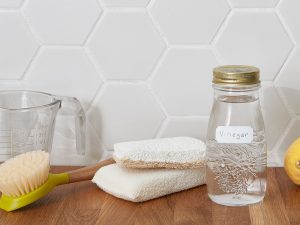
Vinegar works in a way that is quite similar to boric acid. It modifies your pup’s pH levels and helps keep infections at bay. The great thing about vinegar is that you can also add it to your pup’s drinking water. That means you can reap both internal and external benefits while fighting tear stains. However, there’s a catch. Vinegar tastes pretty bad. Adding it to your pup’s drinking water might cause it to drink less and less water every day. Always make sure your poodle is getting an adequate amount.
Milk of Magnesia
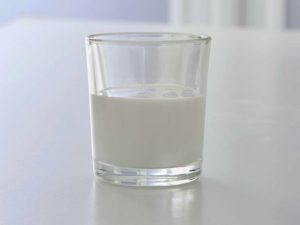
Milk of magnesia is another popular home remedy that works quite effectively against tear stains. It can be used alone to get rid of tear stains or you can add it to a few other ingredients for a boosted effect. All you need is 20% milk of magnesia, 60% hydrogen peroxide, and 20% corn starch. Mix these together until you have a nice, thick paste-like mixture. Apply it to the tear-stained areas. Give it some time to work its magic before gently wiping it off with a damp towel. This mixture can help get rid of your poodle’s tear stains and also lighten its coat a bit.
Check for Allergies

One of the causes of tear stains that you might not think of at first is allergies. You know how some people get watery eyes during seasonal changes or whenever exposed to pollen grains? Well, that’s exactly what happens when your poodle has allergies. It begins to tear up and with time, tear stains develop. Make sure your pup isn’t allergic to anything in its surroundings because that might be the root of your problems.
Wipes
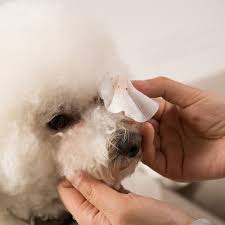
One thing you can do is keep a pack of wipes on you at all times. You never know when tear stains might start to show up. It’s always better to get rid of the smallest stains early before they have a chance to accumulate and ruin your poodle’s coat.
Conclusion
Tear stains aren’t much of a health problem but they can leave your pup feeling not-so-beautiful. Poodles might be susceptible to tear stains, but you can just as easily get rid of them with a few simple tips and tricks. The important thing is to always pay attention to your pup and watch out for signs of pesky reddish-brown streaks.
 Total Pooch Dog Supplements, Tear Stain Removers, De-wormers, Tylosin for Dogs and other great products.
Total Pooch Dog Supplements, Tear Stain Removers, De-wormers, Tylosin for Dogs and other great products.
